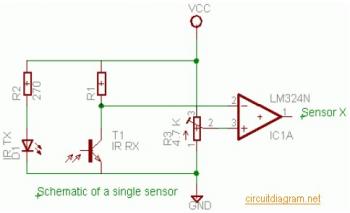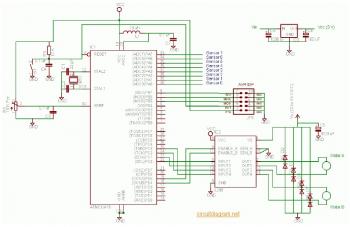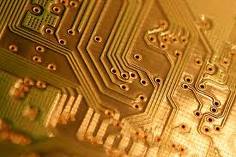 This DC power supply circuit is adjustable using IC Voltage Regulator LM317. LM317 is a versatile and highly efficient 1.2-37V voltage regulator
that can provide up to 1.5A of current with a large heat sink. It's
ideal for just about any application. This was my first workbench power
supply and I still use it.
This DC power supply circuit is adjustable using IC Voltage Regulator LM317. LM317 is a versatile and highly efficient 1.2-37V voltage regulator
that can provide up to 1.5A of current with a large heat sink. It's
ideal for just about any application. This was my first workbench power
supply and I still use it.Since LM317 is protected against short-circuit, no fuse is necessary. Thanks to automatic thermal shutdown, it will turn off if heating excessively. All in all, a very powerful (and affordable!) package, indeed.
Although voltage regulator LM317 is capable of delivering up to 37V, the DC power supply output circuit here is limited to 25V for the sake of safety and simplicity. Any higher output voltage would require additional components and a larger heat sink.
Make sure that the input voltage is at least a couple of Volts higher than the desired output. It's OK to use a trim-pot if you're building a fixed-voltage supply.
Problems:
Follow all the safety precautions when working with mains voltage. Insulate all connections on the transformer.









































 The LM386 is a versatile, small power amplifier designed for use in low voltage consumer applications. The gain is internally set to 20 to keep external part count low, but with the addition of an external resistor and capacitor between pins 1-8 the gain can be set to any value from 20 to 200.
The LM386 is a versatile, small power amplifier designed for use in low voltage consumer applications. The gain is internally set to 20 to keep external part count low, but with the addition of an external resistor and capacitor between pins 1-8 the gain can be set to any value from 20 to 200.  To make the LM 386 a more versatile amplifier, 2 pins (pin 1 and 8) are provided for gain control. With pins 1 and 8 open the internal 1.35k resistor sets the gain at 20 (26 dB). If a capacitor is placed between pin 1-8, bypassing the built-in 1.35k resistor, the gain will go up to 200.
To make the LM 386 a more versatile amplifier, 2 pins (pin 1 and 8) are provided for gain control. With pins 1 and 8 open the internal 1.35k resistor sets the gain at 20 (26 dB). If a capacitor is placed between pin 1-8, bypassing the built-in 1.35k resistor, the gain will go up to 200.